
|
Astronomy Picture Of the Day (APOD)
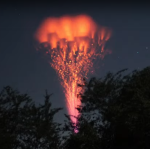 Gigantic Jet Lightning from Puerto Rico
Gigantic Jet Lightning from Puerto Rico
28.09.2021
Have you ever seen a gigantic jet? They are extremely rare but tremendously powerful. Gigantic jets are a type of lightning discharge documented only this century that occur between some thunderstorms and the Earth's ionosphere high above them.
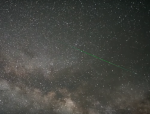 Night of the Perseids
Night of the Perseids
27.09.2021
Have you ever experienced a meteor shower? To help capture the wonder, a video was taken during the peak of the recent Perseid meteor shower above the Indian Astronomical Observatory in Hanle, India, high up in the Himalayan mountains.
 Unwrapped: Five Decade Old Lunar Selfie
Unwrapped: Five Decade Old Lunar Selfie
26.09.2021
Here is one of the most famous pictures from the Moon -- but digitally reversed. Apollo 11 landed on the moon in 1969 and soon thereafter many pictures were taken, including an iconic picture of Buzz Aldrin taken by Neil Armstrong.
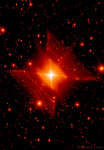 The Red Square Nebula
The Red Square Nebula
25.09.2021
How did a round star create this square nebula? No one is quite sure. The round star, known as MWC 922 and possibly part of a multiple star system, appears at the center of the Red Square Nebula. The featured image combines infrared exposures from the Hale Telescope on Mt.
 The Bubble and the Star Cluster
The Bubble and the Star Cluster
24.09.2021
To the eye, this cosmic composition nicely balances the Bubble Nebula at the right with open star cluster M52. The pair would be lopsided on other scales, though. Embedded in a complex of interstellar...
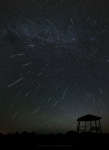 Perseid Outburst at Westmeath Lookout
Perseid Outburst at Westmeath Lookout
23.09.2021
This year an outburst of Perseid meteors surprised skywatchers. The reliable meteor shower's peak was predicted for the night of August 12/13. But persistent visual observers in North America were deluged with...
 Harvest Moon Trail
Harvest Moon Trail
22.09.2021
Famed in festival, story, and song the best known full moon is the Harvest Moon. For northern hemisphere dwellers that's a traditional name of the full moon nearest the September equinox. Seen from...
 Equinox on a Spinning Earth
Equinox on a Spinning Earth
21.09.2021
When does the line between night and day become vertical? Today. Today is an equinox on planet Earth, a time of year when day and night are most nearly equal. At an equinox, the Earth's terminator -- the dividing line between day and night -- becomes vertical and connects the north and south poles.
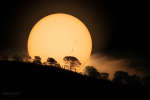 Sun Spot Hill
Sun Spot Hill
20.09.2021
Is this giant orange ball about to roll down that tree-lined hill? No, because the giant orange ball is actually the Sun. Our Solar System's central star was captured rising beyond a hill on Earth twelve days ago complete with a delightfully detailed foreground.
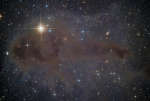 Lynds Dark Nebula
Lynds Dark Nebula
19.09.2021
Stars are forming in Lynds Dark Nebula (LDN) 1251. About 1,000 light-years away and drifting above the plane of our Milky Way galaxy, the dusty molecular cloud is part of a complex of dark nebulae mapped toward the Cepheus flare region.
|
January February March April May June |
||||||||||||||||||||||||||||||||||||||||||||||||||||||||